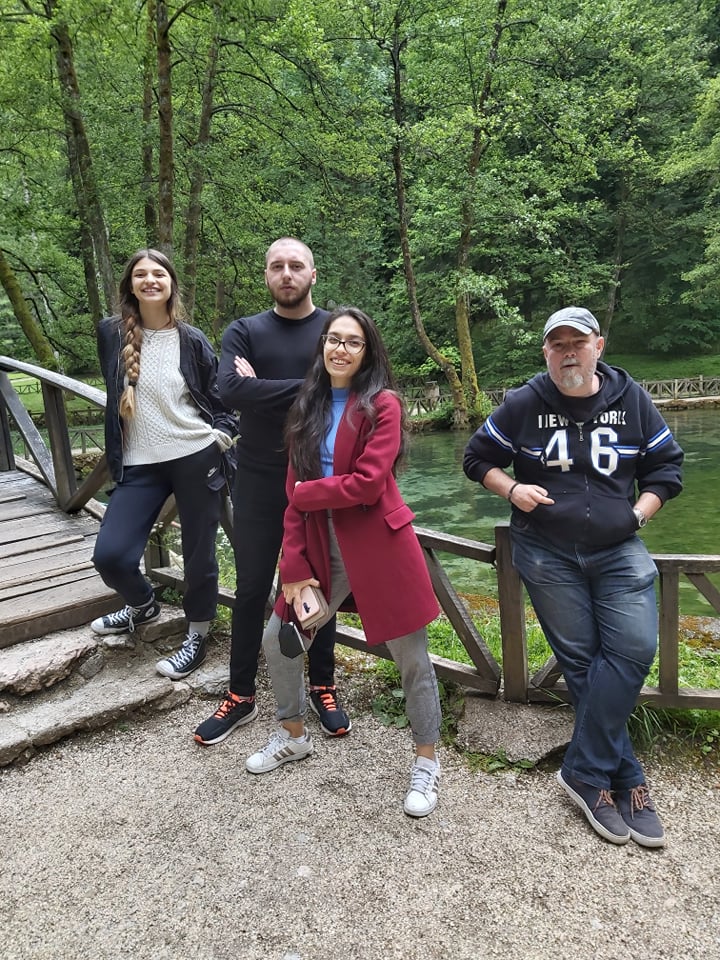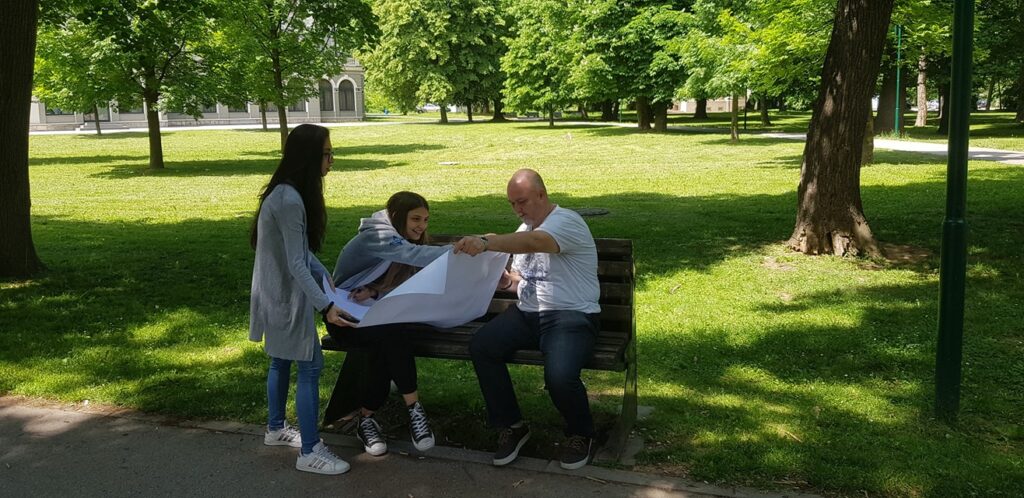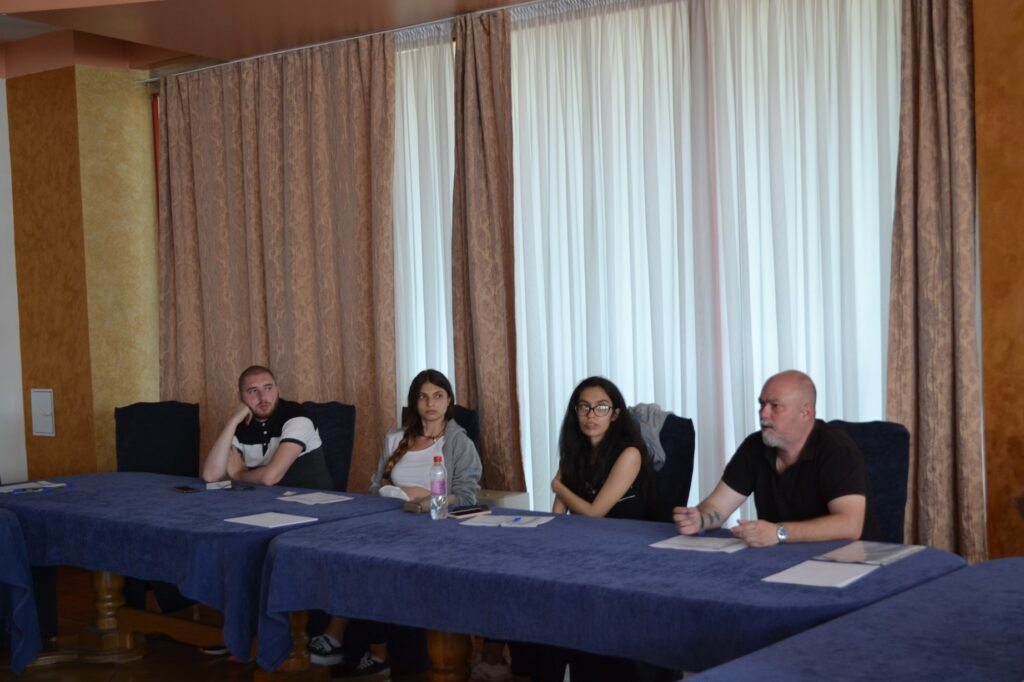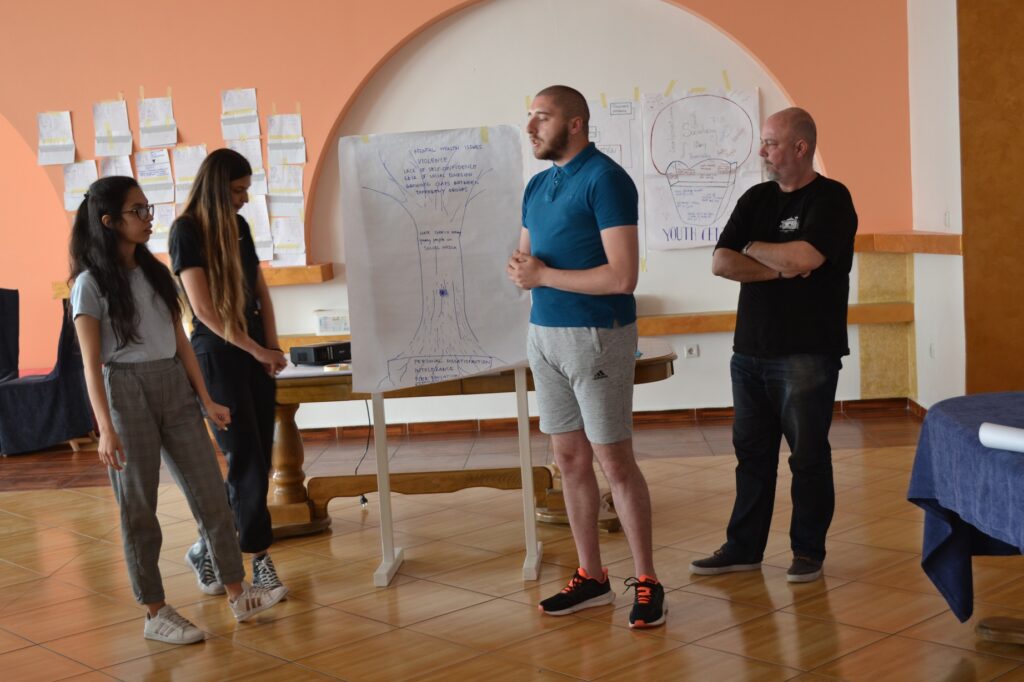I had the opportunity as a participant of Volunteers Centre Skopje to participate in the training course entitled “Volunteering connecting communities – Volunteering connecting communities 2.0” from 24.05 to 31.05 in Sarajevo, Bosnia and Herzegovina. The project is organized by Udruzenje “Mladi volonteri” and includes 500 youth workers, 5 organizations, 15 schools and more than 2500 young people so that they can be supported and encouraged through information and specific tools in the field of volunteerism and inclusion on both the local and international level.
We started the training course on May 24 by arriving in Sarajevo early in the morning. The same day was free and we had enough time to rest and walk through the streets of Sarajevo interwoven with different architectural styles from different cultures, civilizations as well as religions that left their mark on the city and earned it the name Jerusalem of Europe.
The next day our first session of the training course was held for which we were separated into four teams from different countries and had the task to take pictures of the main sights in the city of Sarajevo, find out more information about them and talk to the locals. The idea of this session was not only to get familiar with the city of Sarajevo and its history but also to get to know the participants from the other teams. During the following sessions, we noted our motivation, expectations, contribution and fears for the training course and established common rules of conduct.
On May 26, we discussed campaigns in general, what they are, what their goals are, what makes them successful but also unsuccessful. The same day we started planning and creating our campaigns therefore we were divided into our national teams. We defined a specific social problem that young people face and the reasons and consequences of its occurrence on the community. We started building our campaign on the issue of hate speech among young people on social media. We have listed various socio-economic causes of hate speech, such as the poor economic situation in the country, the education system and the domestic upbringing. We have explained the outcomes of hate speech from a psychological point of view by directly affecting mental health but also from a societal point of view by impacting social cohesion, tolerance and respect among young people and leading to an increase in the gap between them on the basis of gender, race, nationality and ethnicity, political and religious beliefs.
The detailed design of the campaign as well as the whole project about hate speech among young people on social networks continued during the following day. We developed the SWOT analysis for which we listed the strengths, weaknesses, opportunities and threats that we would face in the implementation of our campaign. We also covered the logical framework, where we included the general goal and the objectives of the project, the expected results and the project activities. We determined the time frame in which the project would be implemented as well as the location of the implementation of the activities and its alternative solutions. At the end of the sessions, we visited the small town of Visoko near Sarajevo. As part of the excursion, we got the chance to discover more and walk through the tunnels of the five pyramids in Visoko, including the tallest in the world, the so-called Pyramid of the Sun.
During the sixth day of the training course, we dedicated ourselves to defining the target groups and beneficiaries of our project. We also analyzed the budget in detail, that is we allocated the costs that would be needed for the implementation of the project itself. Тhe same day, we held an intercultural evening in which each national team from the participating states represented their own country through oral speeches and quizzes, music, dance and traditional food.
On the seventh day of the training course, we held the campaign fair. Each team from the participating states in the training course was in charge of introducing their idea and at the end of each presentation, there was an active discussion about the shortcomings and opportunities for improvement of each project.
This training course helped me in my professional and personal growth. It is a perfect combination of gaining new knowledge in the field of volunteerism but also an acknowledgment of different cultures and customs that were brought and demonstrated by other participating countries in the project. The mixture of twenty-five young people from different backgrounds provided us with diverse perspectives on the challenges young people are facing and enabled us to find solutions for further implementation in our local communities. This shows that the desire for a better tomorrow overcomes the language and cultural barrier and we as young people are ready and eager for a better future for future generations.
Aleksandra Sipkovska




